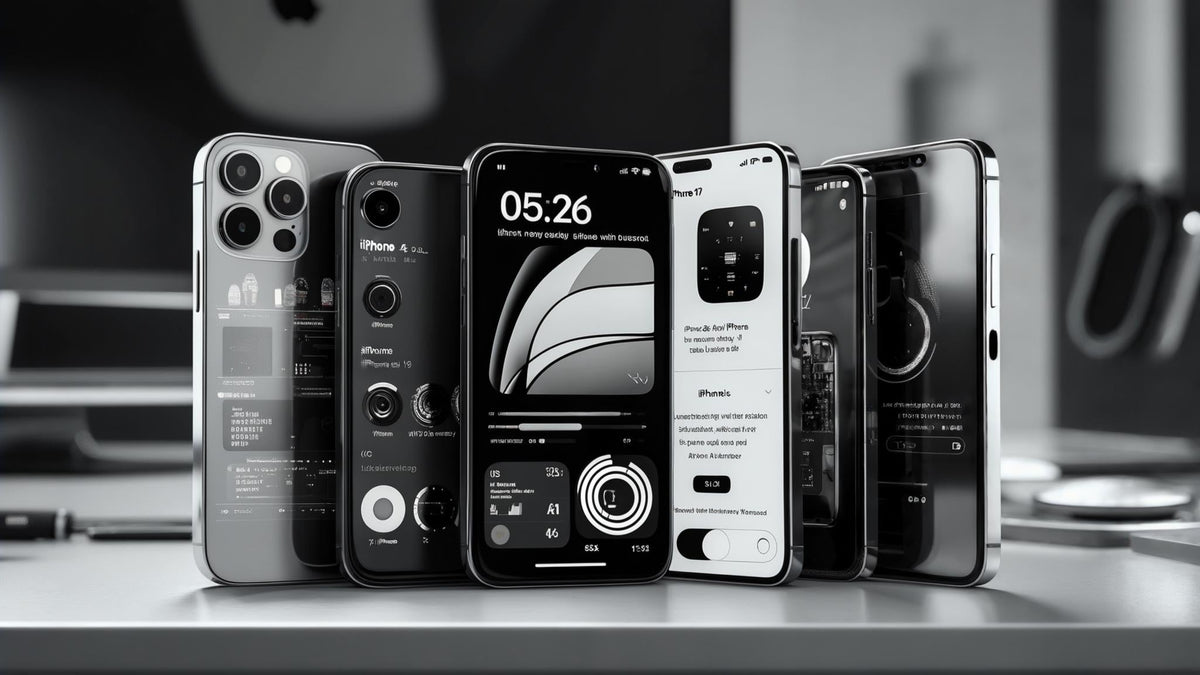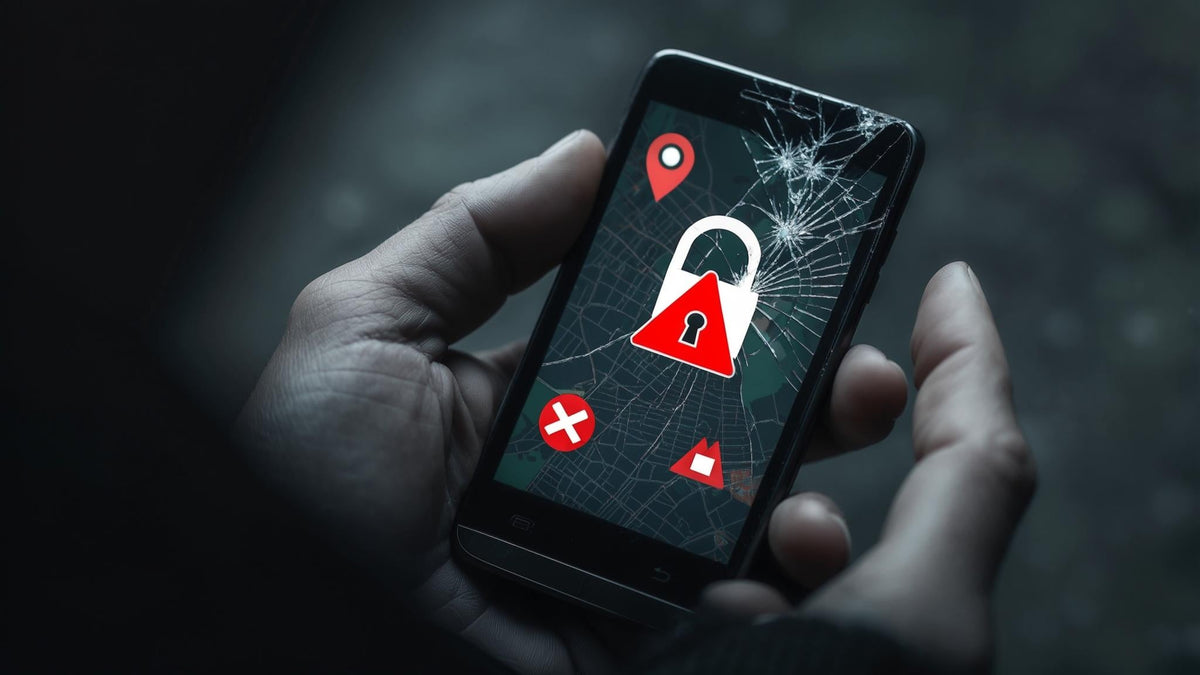Think your phone number is just for calls and texts? Think again. It's actually the master key to your digital life – and scammers know it. Hand over those ten digits to the wrong person, and you might as well give them your house keys too.
The numbers are staggering. According to TrueCaller's 2024 report highlighted by Cybernews, phone scams have become a massive threat, affecting over 56 million Americans and costing them a staggering $25.4 billion annually. That's not just statistics - that's real people losing their life savings, their identities, and their peace of mind.
Here's the thing about phone number protection: it's not rocket science, but it does require some smart moves. I'll walk you through the real threats targeting your number, from SIM swapping to social engineering attacks, and give you actionable strategies you can use today. We'll cover practical steps for immediate protection, advanced security measures for maximum defense, and what to do if your number gets compromised.
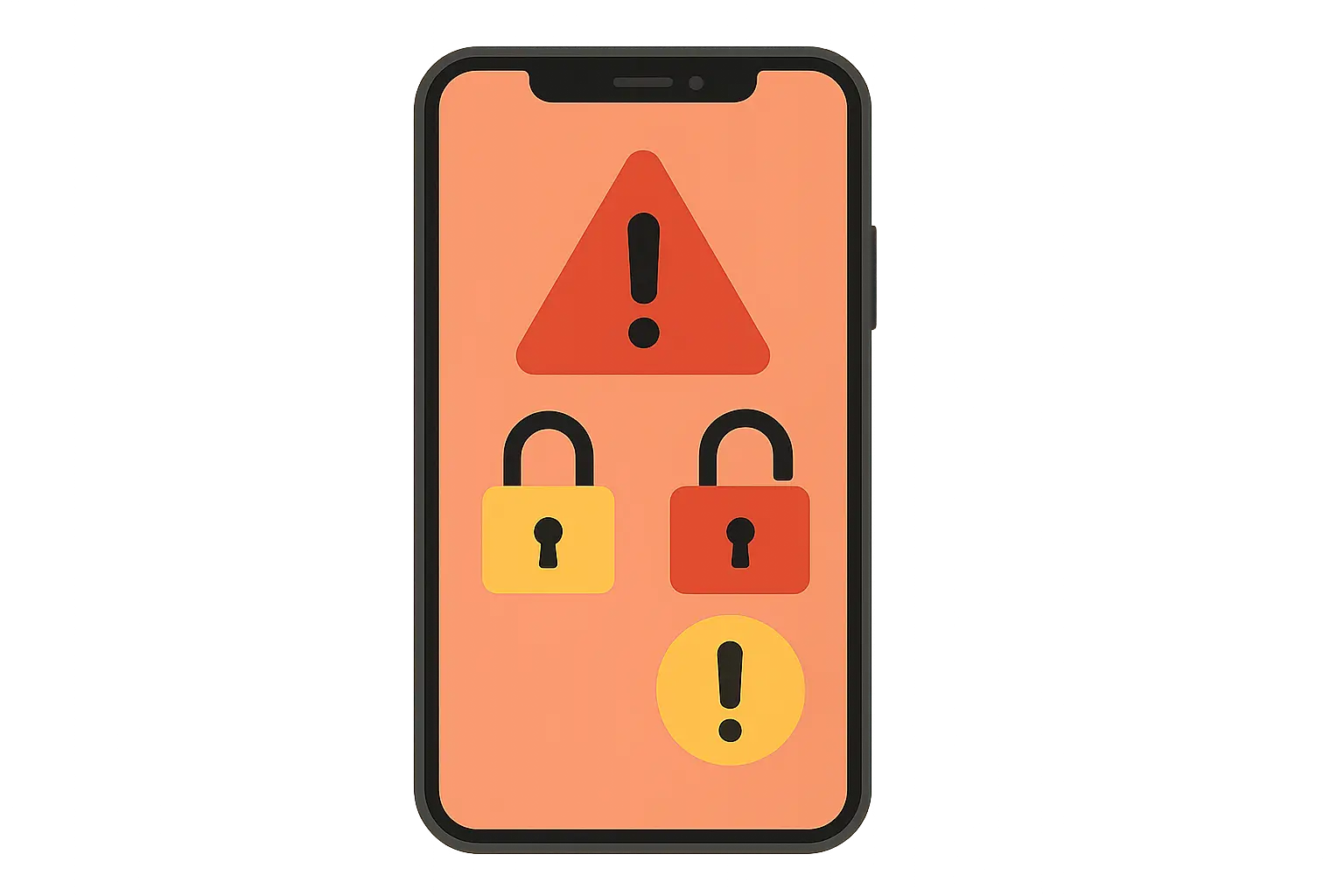
Table of Contents
Why Your Phone Number Is Under Attack
Smart Ways to Keep Your Number Private
Advanced Security Tactics That Actually Work
What to Do When Things Go Wrong
Final Thoughts
TL;DR
SIM swapping and caller ID spoofing are real threats that can compromise your entire digital identity
Use virtual numbers for online accounts and shopping to protect your primary number
Replace SMS two-factor authentication with authenticator apps or hardware security keys
Add security PINs to your carrier account and enable port protection services
Remove your number from data broker sites and adjust social media privacy settings
Have an emergency response plan ready if your number gets compromised
Monitor your accounts regularly and set up alerts for suspicious activity
Why Your Phone Number Is Under Attack
Your phone number has evolved from a simple way to call mom into a digital skeleton key. It unlocks everything from your bank account to your social media. And criminals? They've figured this out way faster than most people have.
Picture this: You wake up and your phone has no signal. Weird, but maybe it's just a tower issue. Then the emails start flooding in – password reset requests for accounts you didn't touch. Your friends start texting asking why you're sending them weird messages about needing money. Congratulations, you've just been SIM swapped.
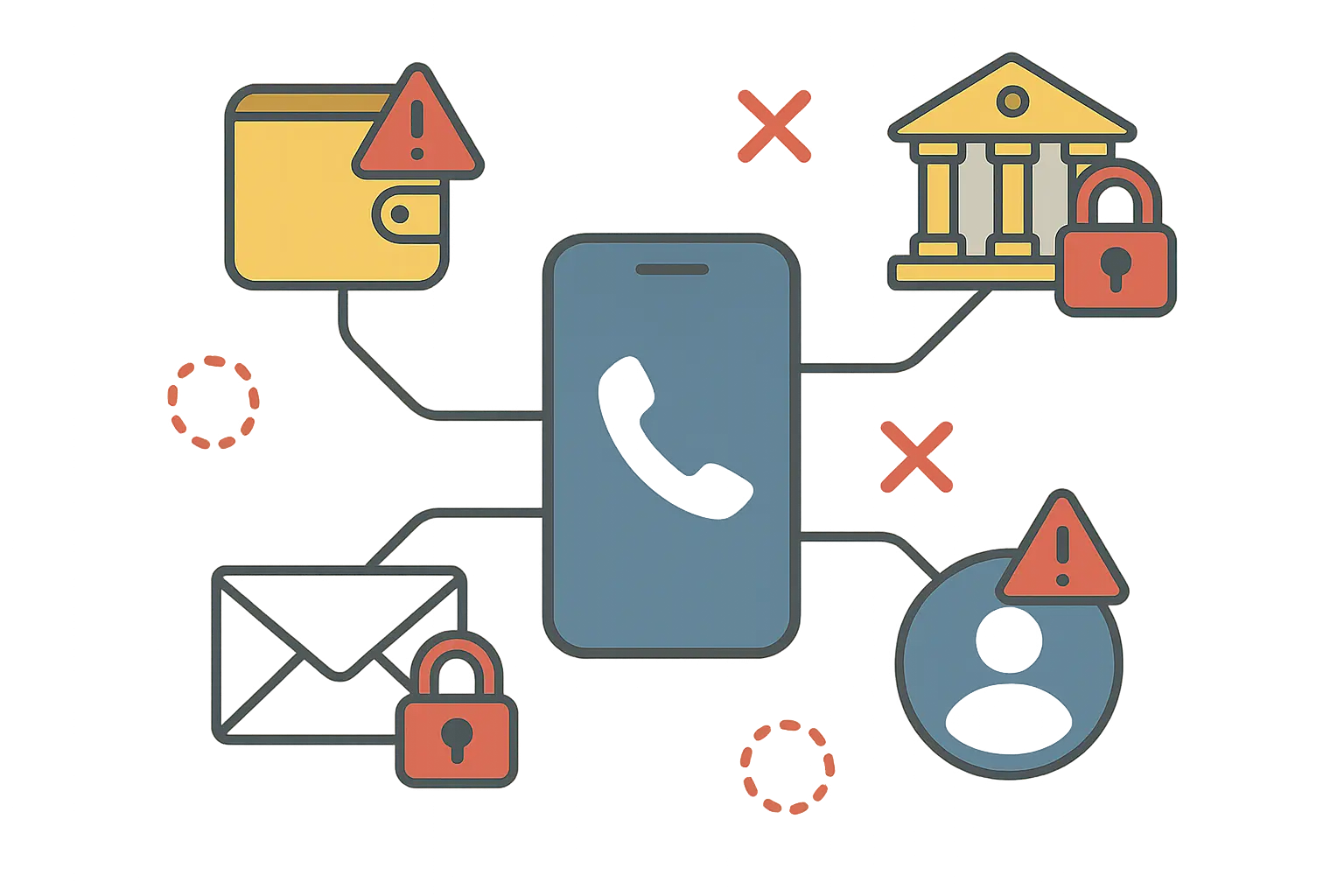
The Most Common Ways Criminals Target Your Number
Modern phone number attacks range from basic spam operations to complex schemes designed to steal your identity and drain your bank accounts. These attacks exploit both technical vulnerabilities and human psychology, making them particularly dangerous for unsuspecting victims.
The Federal Trade Commission reports that when scams happen over the phone, victims lose more per person – with a median loss of $1500, highlighting the financial devastation these attacks can cause. That's more than most people have in their emergency fund.
SIM Swapping - When Your Number Gets Hijacked
Here's how SIM swapping works – and why it's so scary:
A scammer calls your phone company pretending to be you. They say they got a new phone and need to transfer service. With just a few personal details (stolen from data breaches), they convince customer service to move your number to their device.
Boom. Now they're getting all your texts and calls. Including those security codes from your bank.
The process is frighteningly simple. Attackers gather personal information about you from data breaches, social media, or public records. They then call your carrier with a sob story about a broken phone or lost SIM card. Customer service reps, trying to be helpful, often comply without enough verification.
Once they control your number, the real damage begins. Password reset requests flood your email as they systematically break into your accounts. Banking apps, social media profiles, and email accounts all become vulnerable when SMS codes arrive on their device instead of yours.
Major carriers are fighting back. In July, AT&T introduced its free Wireless Account Lock security feature to help prevent SIM swaps according to TechCrunch, allowing customers to add extra protection by preventing anyone from moving a SIM card or phone number to another device.
Consider this real case: a hacker successfully executed a SIM swap attack against a victim named Biggs. The attacker gained control of his accounts and messaged Biggs' friends asking for money with a made-up story using details from Biggs' account. While Biggs reclaimed his account within 30 minutes, the hacker caused significant damage in that short timeframe. Thirty minutes was all it took.
Caller ID Spoofing - When Nothing Is What It Seems
Ever get a call from your own number? That's spoofing in action.
Caller ID spoofing lets scammers disguise their real phone number by displaying fake information on your screen. They love impersonating banks, government agencies, or even your grandmother to gain your trust.
The technology is surprisingly cheap and easy. Voice over Internet Protocol (VoIP) services make it simple for anyone to manipulate caller ID information. Scammers use this to appear as your bank, the IRS, or local police department.
These fake calls create artificial panic. "Your account has been compromised," they'll say, or "You owe back taxes that must be paid immediately." The spoofed number makes their lies seem credible.
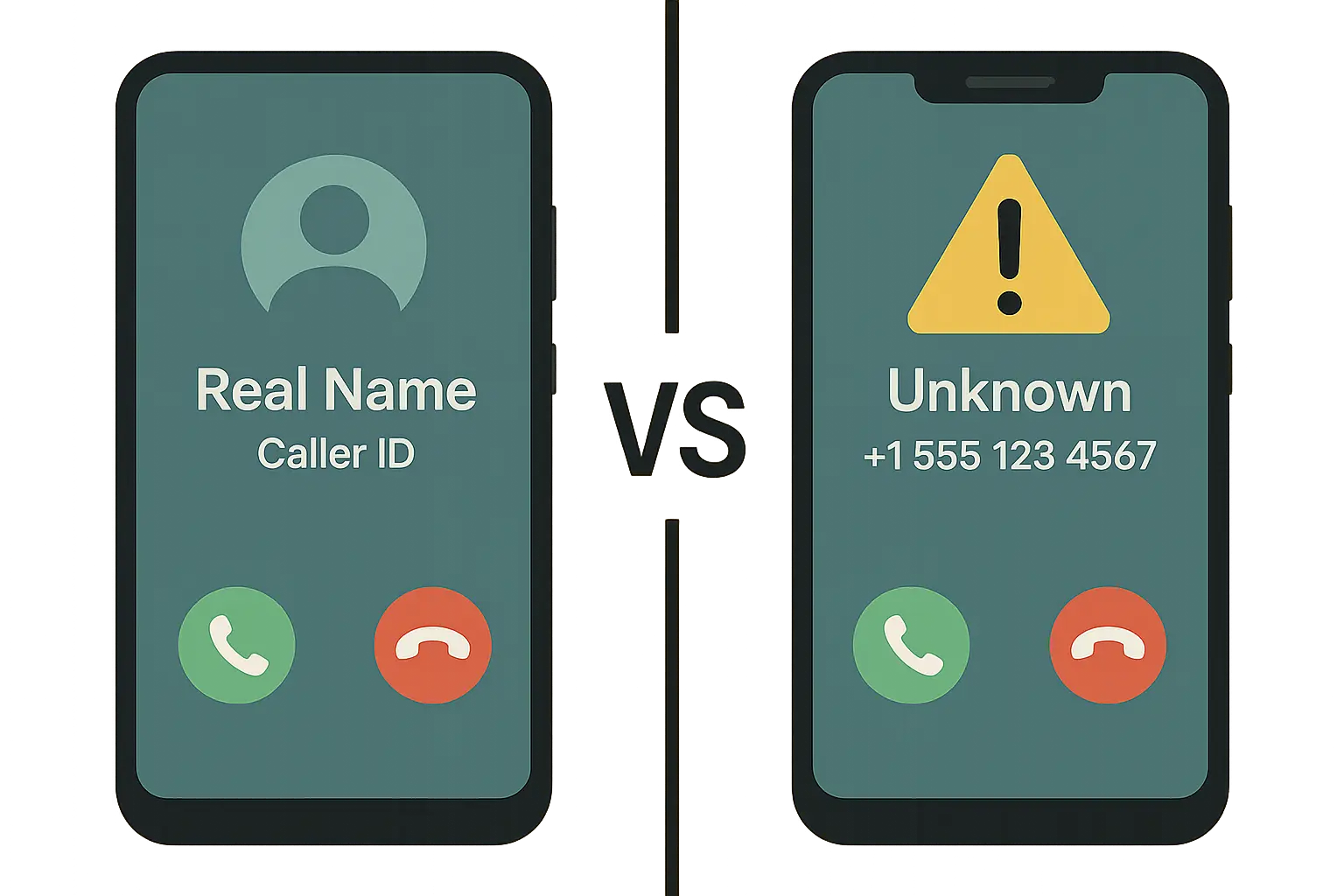
How Your Number Gets Harvested and Sold
Your phone number doesn't stay private on its own. Data breaches expose millions of numbers annually. Social media profiles and public records provide easy pickings for criminals building target lists.
Data brokers legally collect and sell personal information, including phone numbers, to anyone with a credit card. Marketing companies buy it. Private investigators buy it. And yes, scammers buy it too. Your number might be sold dozens of times without you ever knowing.
Social media makes it even easier. Default privacy settings often let anyone find you by your phone number. Contact syncing features spread your number through other users' address books like a virus.
How Scammers Get Your Phone Number |
Risk Level |
Prevention Method |
|---|---|---|
Data breaches from companies |
High |
Monitor breach notifications, use breach checking tools |
Social media oversharing |
Medium |
Adjust privacy settings, avoid posting numbers publicly |
Data broker websites |
High |
Opt out of broker databases quarterly |
Public records (business filings, voter records) |
Medium |
Use P.O. boxes or registered agents when possible |
Phishing scams and fake giveaways |
Medium |
Never provide numbers to unsolicited requests |
Autodialers testing random numbers |
Low |
Don't answer unknown numbers, use call screening |
Social Engineering - When Psychology Becomes a Weapon
Scammers don't just rely on technology. They're master manipulators who use your phone number as a starting point for elaborate psychological games.
Pretexting - Elaborate Lies That Sound Convincing
Pretexting is basically professional lying. Attackers create detailed false scenarios to trick you into revealing personal information. They'll research you extensively, crafting believable stories that use real details about your life.
Picture this: someone calls claiming to be from your bank's fraud department. They mention your recent Starbucks purchase and that weird Amazon charge from last week. They sound concerned about suspicious activity and urgently need to verify your account.
The combination of accurate information and manufactured urgency overwhelms most people's natural skepticism. When someone seems to know intimate details about your accounts, cooperation feels natural.
Vishing - Voice Phishing That Targets Your Trust
Vishing (voice phishing) combines traditional phone calls with modern psychological manipulation. Attackers use professional scripts, fake call center background noise, and emotional pressure to extract sensitive information.
These calls often start with panic-inducing automated messages. "This is your final notice" or "Your account will be closed in 24 hours" are classics. When you call back using their number, you reach a fake customer service rep ready to "help" by collecting your personal information.
The human element makes vishing particularly nasty. Unlike email phishing, voice conversations allow real-time adaptation. Skilled attackers adjust their approach based on your reactions, making their deception more convincing.
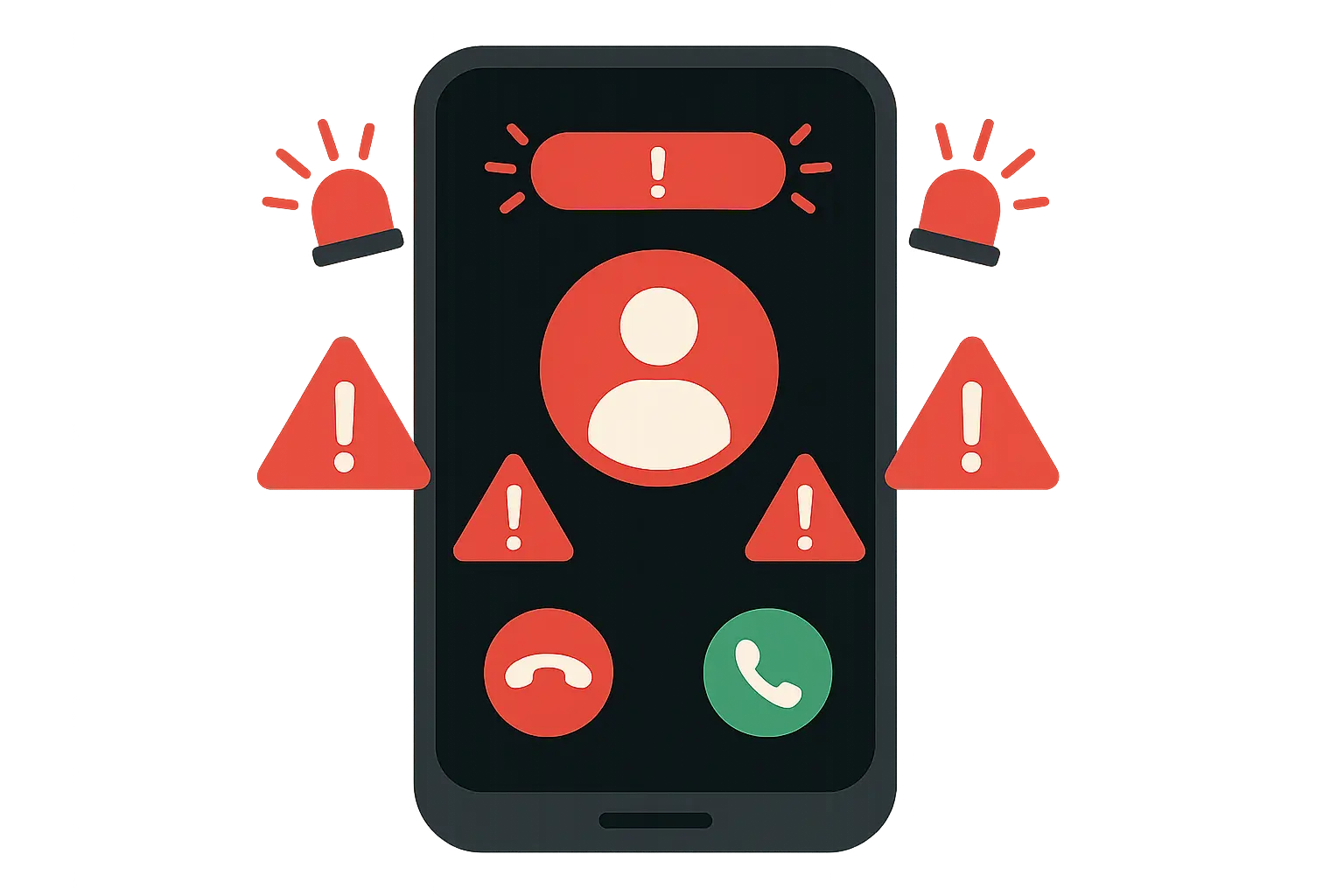
The SMS Two-Factor Authentication Problem
SMS-based two-factor authentication is like putting a screen door on a submarine. It looks like security, but it's got a massive hole in it.
How Attackers Intercept Your Text Messages
Text message interception happens multiple ways. SIM swapping is the most common, but malware on compromised devices can also redirect SMS messages without you knowing.
There are also technical vulnerabilities in cellular networks that sophisticated attackers can exploit. SS7 (Signaling System 7) flaws allow remote SMS interception, though this requires serious technical skills.
But here's the kicker: once attackers control your number through SIM swapping, they get all your text messages. Including those critical two-factor authentication codes that are supposed to protect you.
Smart Ways to Keep Your Number Private
Your phone number doesn't have to be public property. Here's how to keep it locked down without becoming a digital hermit. These methods help you compartmentalize your digital life and reduce the attack surface available to criminals.
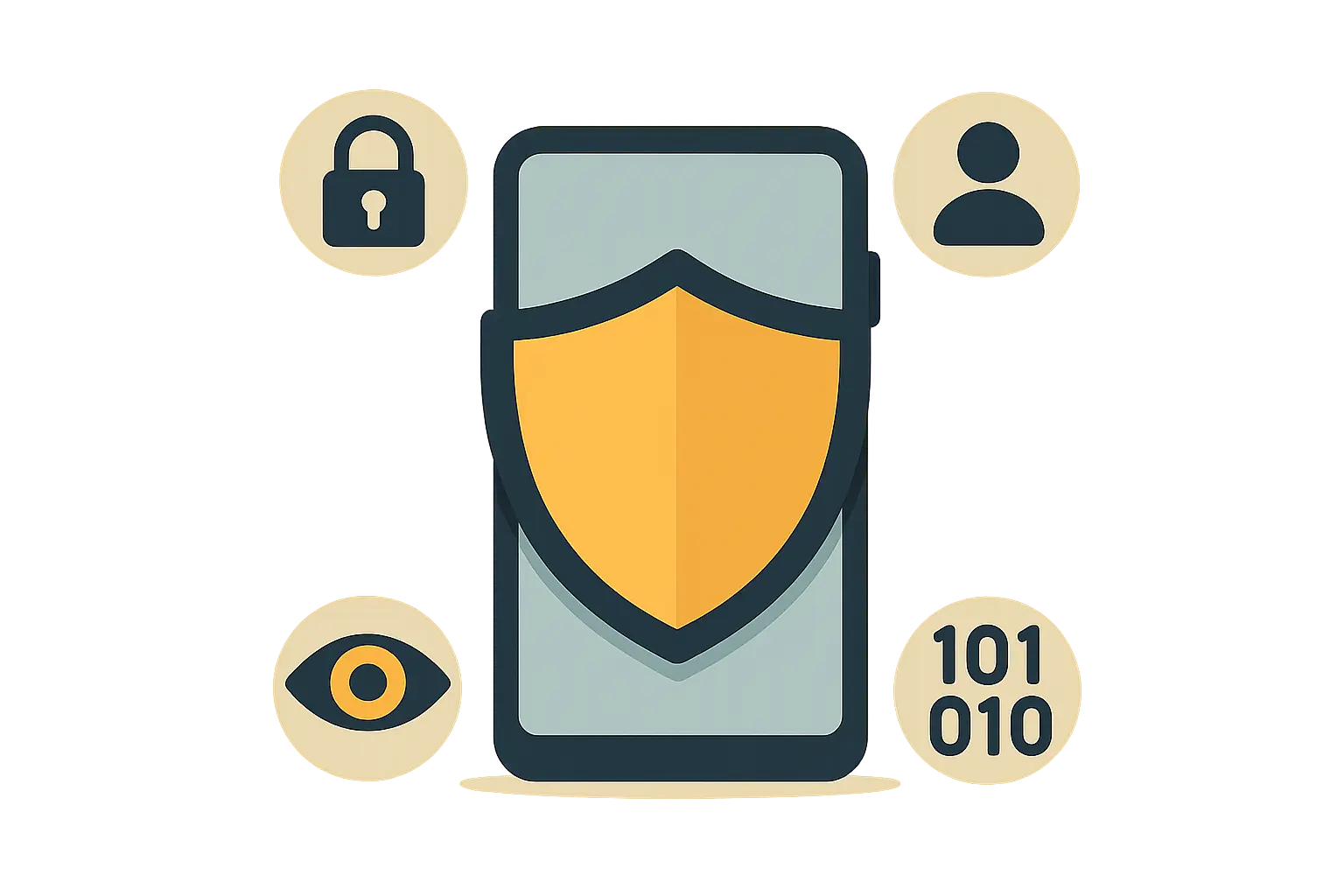
Virtual Numbers: Your Digital Bodyguard
Think of virtual numbers like having a bouncer for your real phone number. They handle the riffraff so your actual number stays clean.
When you're out and about, having the most protective phone case ensures your device stays secure while implementing these privacy measures.
Google Voice - The Free Option That Actually Works
Setting up Google Voice takes about five minutes and provides immediate phone number protection benefits:
Grab a free number in your preferred area code
Set up forwarding to your real phone
Use it for shopping, dating apps, and sketchy Craigslist deals
If it gets blown up with spam, just ditch it and get a new one
Set custom voicemail greetings for different types of callers
I know a freelance graphic designer who uses Google Voice for all client work. When she posts her portfolio online or applies for projects, she never gives out her real number. Result? Zero spam calls on her personal line, and she can set business hours when calls actually reach her.
Other Virtual Number Services Worth Your Time
Burner specializes in temporary numbers perfect for short-term situations. MySudo provides multiple virtual identities with separate numbers, emails, and even payment methods. Hushed offers international numbers and encrypted messaging features.
The key advantage is compartmentalization. If one virtual number gets compromised or starts receiving spam, you can simply abandon it without affecting your primary communications.
Carrier-Based Protection Services
Major wireless carriers now offer premium protection services that add security layers to your primary number. These include advanced spam blocking, call screening, and enhanced account security features.
Verizon's Call Filter and T-Mobile's Scam Shield offer real-time spam detection and blocking. AT&T's ActiveArmor provides similar protection with additional identity monitoring features.
Port protection services prevent unauthorized number transfers between carriers. When enabled, any attempt to move your number requires additional verification steps, making SIM swapping attacks much harder to pull off.
T-Mobile allows customers to prevent SIM swaps and block unauthorized number port outs for free through their T-Mobile online account as reported by TechCrunch, with the primary account holder able to toggle these protections on or off as needed.
Lock Down Your Social Media
Your social platforms are probably broadcasting your number to anyone who wants it. Time to fix that.
For professionals who need to stay connected while maintaining security, learning which phone cases cops love can provide insights into durable protection that withstands demanding environments.
Facebook Settings That Matter
Most social media platforms enable phone number discovery by default. Facebook's "Who can look you up?" settings control this. Go to Settings & Privacy → Privacy → "Who can look you up using your phone number?" Change it to "Only me." Do this now - I'll wait.
Instagram, LinkedIn, and Twitter have similar settings buried in their privacy menus. The exact location changes as platforms update their interfaces, but the principle stays the same: limit who can find you using your phone number.
Contact syncing features automatically share your number with other users' address books. Turn these off to prevent your number from spreading through social networks.
The Professional vs. Personal Split
Use different numbers for work and personal stuff. It's like having separate keys for your house and office - just makes sense.
Professional numbers should handle work-related accounts, business social media profiles, and client communications. Personal numbers stay reserved for family, close friends, and essential services.
This separation provides benefits beyond security. You can set different availability hours for each number, customize voicemail messages for different audiences, and maintain better work-life balance.
Communication Type |
Which Number |
Security Benefit |
Management Tip |
|---|---|---|---|
Banking & Financial |
Real number |
Maximum security for critical accounts |
Enable all available security features |
Healthcare & Insurance |
Real number |
Medical privacy protection |
Use for appointment confirmations only |
Work & Professional |
Virtual/secondary |
Isolates business from personal |
Set business hours for forwarding |
Online Shopping |
Virtual/burner |
Prevents marketing spam |
Use different number per retailer |
Social Media |
Virtual/secondary |
Limits profile discovery |
Disable phone lookup features |
Dating Apps |
Burner number |
Privacy until trust established |
Change regularly for safety |
Public Listings |
Virtual/business |
Keeps personal number private |
Use for directories and websites |
Advanced Security Tactics That Actually Work
Ready to level up? These tactics will make attackers work a lot harder to mess with you. Beyond basic privacy measures, these methods provide robust protection against sophisticated attacks.
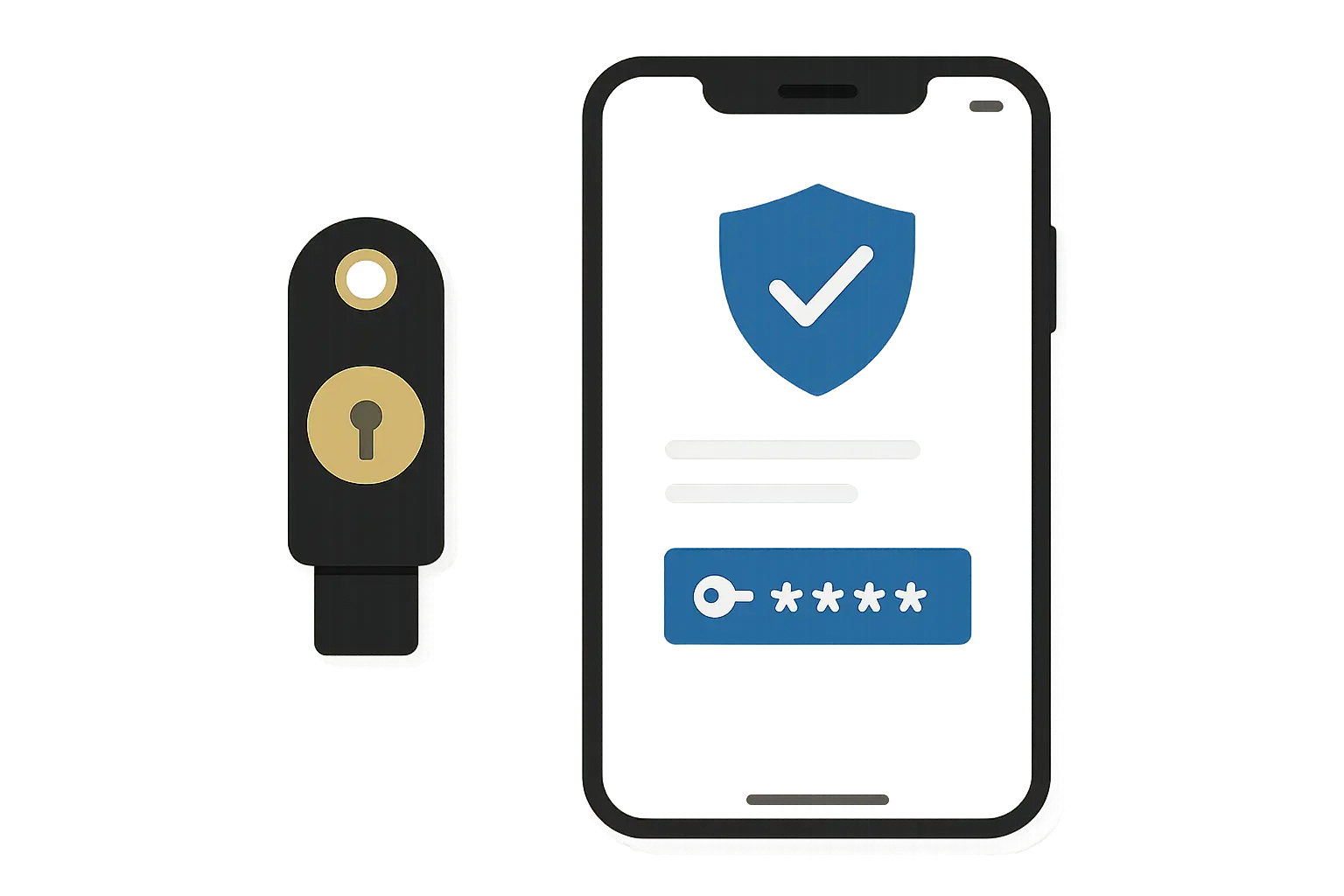
Ditch SMS Authentication
SMS codes are like leaving your house key under a fake rock - everyone knows where to look. Moving beyond SMS-based security eliminates the primary vulnerability that phone number attacks exploit.
For first responders and security professionals who can't afford communication failures, understanding the best phone cases paramedics use can inform your device protection strategy during security incidents.
Hardware Security Keys: The Real Deal
These little devices are like having a bouncer that never gets fooled. Physical security keys represent the most secure form of two-factor authentication available to regular people.
Here's your game plan:
Buy at least two identical security keys (you'll lose one eventually)
Register both keys with critical accounts starting with email and banking
Store the backup key somewhere secure but accessible
Gradually replace SMS two-factor authentication across all accounts
Test the backup key periodically to make sure it works
The physical nature of these keys makes remote attacks impossible. Even if criminals compromise your phone number, email, and password, they can't access accounts protected by hardware keys without physically stealing the device.
Authenticator Apps: The Easy Upgrade
Google Authenticator or Microsoft Authenticator work offline and can't be hijacked through your phone number. Takes an hour to set up, saves you from years of headaches.
Time-based one-time password (TOTP) authenticator apps generate security codes locally on your device, eliminating the network vulnerabilities that SMS authentication creates. These apps work even without cellular service.
Google Authenticator keeps things simple with basic code generation and cloud backup. Microsoft Authenticator integrates well with Microsoft services and offers push notifications. Authy provides multi-device synchronization and encrypted cloud backups.
The transition requires temporarily enabling both SMS and app-based authentication while you configure each account. Once the authenticator app works properly, disable SMS authentication to eliminate the vulnerability.
A small business owner switched all company accounts from SMS to Google Authenticator after learning about SIM swapping risks. The transition took two hours but provided immediate peace of mind. When a competitor's business was later hit by a SIM swap attack that compromised their email and social media accounts, the protected business owner realized the time investment had potentially saved thousands in damages and reputation loss.
Make Your Carrier Account Fort Knox
Your mobile carrier account represents a critical vulnerability that attackers exploit for SIM swapping attacks. Implementing additional security measures at the carrier level creates significant barriers against unauthorized account changes.
Account Security PINs and Verification Requirements
Call your carrier and ask for:
A unique PIN that's different from your account password
Port protection (prevents number transfers)
Alerts for any account changes
In-person ID requirements for major changes
Adding extra authentication requirements to your carrier account makes unauthorized changes much more difficult. These measures force attackers to overcome additional hurdles even if they have extensive personal information about you.
Contact your carrier's customer service to implement these security measures:
Add a unique PIN or password that differs from your account password
Require in-person verification with government-issued ID for all account changes
Set up account alerts for any access attempts or modifications
Enable additional verification for SIM card changes or number transfers
Consider adding a verbal password that must be provided during phone support calls
Document these security measures and store the information securely. You'll need to remember these additional authentication requirements when you legitimately need to make account changes.
Port Protection and Number Lock Services
T-Mobile and AT&T now offer free SIM swap protection - turn it on. Port protection services prevent your number from being transferred to another carrier without additional verification steps.
Verizon's Number Lock prevents number transfers until you specifically disable the feature. T-Mobile's Account Takeover Protection requires additional verification for account changes. AT&T offers similar protections through their security settings.
Enabling these services typically requires calling customer service or accessing your online account settings. The exact process varies by carrier, but the protection is usually free and can be enabled immediately.
Remember that legitimate number transfers will require additional steps when these protections are active. Plan ahead if you're switching carriers or need to transfer your number for any reason.
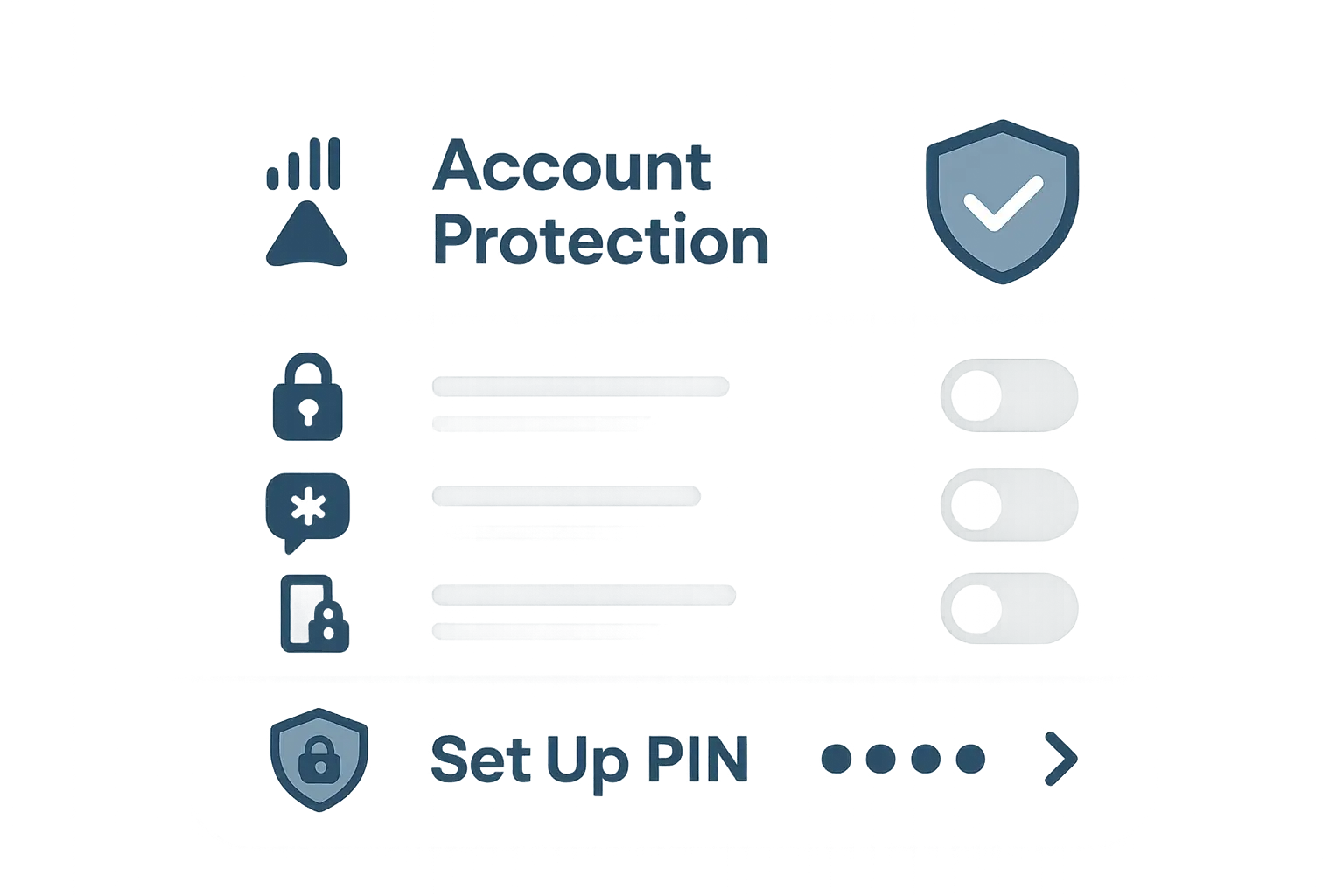
Scrub Your Digital Footprint
Your number is probably scattered across dozens of data broker sites. Time for some spring cleaning. Reducing your phone number's presence in public databases and online records limits the information available to potential attackers.
Remove Your Number from Data Broker Sites
The Manual Method:
Search for your number on Whitepages, Spokeo, BeenVerified
Follow their opt-out procedures (usually buried in privacy policies)
Provide required verification information
Monitor for removal confirmation
Repeat every few months as your info pops back up
Data brokers collect and sell personal information including phone numbers, but most allow you to opt out of their databases. The process is time-consuming but significantly reduces your number's availability to potential attackers.
Major data broker sites include Whitepages, Spokeo, BeenVerified, PeopleFinder, and dozens of others. Each has its own opt-out process, typically requiring email verification and sometimes additional documentation.
The Lazy Method: Pay a service like DeleteMe to do it for you. Costs about $100/year but saves hours of tedious work. Services automate this process for a monthly fee. While more expensive than manual removal, these services save significant time and provide ongoing monitoring.
Managing Public Records and Online Presence
Phone numbers often appear in voter registrations, property records, business filings, and other public documents. While you can't eliminate all public record appearances, you can minimize unnecessary exposure.
Voter registration records are public in most states, but some allow you to request confidential status if you're in law enforcement, a victim of domestic violence, or face other safety concerns. Contact your local election office to understand available options.
Property records typically include contact information, but some jurisdictions allow you to use a P.O. box or attorney's address instead. Business filings often require contact information, but you can sometimes use a registered agent service.
Review your online presence regularly by searching for your phone number in quotes ("555-123-4567"). This reveals where your number appears publicly and helps you identify sources that need attention.
When Things Go Wrong
Even with perfect defenses, bad things can happen. Here's your game plan for phone number protection when disaster strikes.
Despite your best prevention efforts, phone number compromise can still occur. Having a structured response plan ensures you take all necessary protective steps quickly, minimizing damage and speeding recovery.
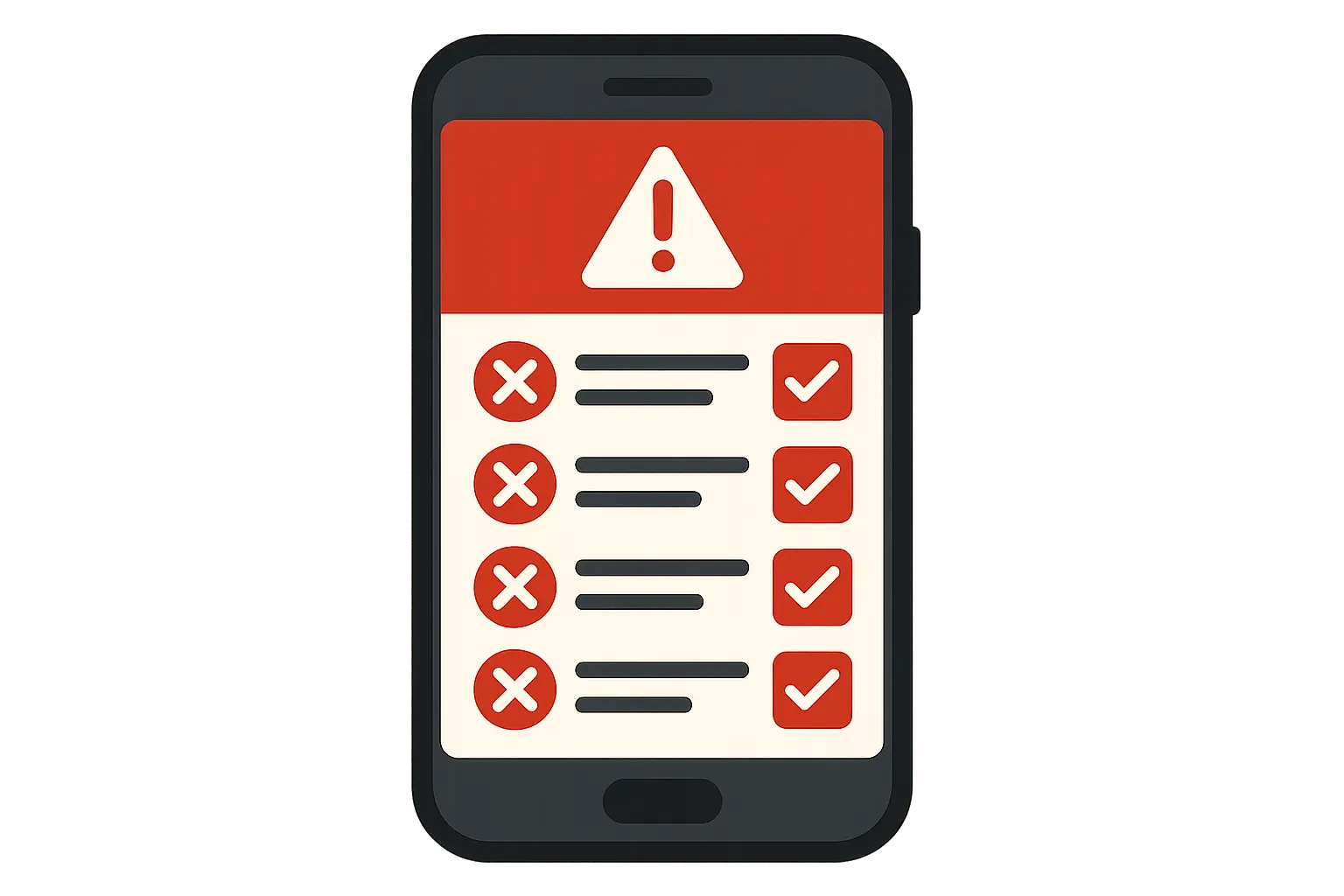
Spot the Warning Signs
Early detection of phone number compromise allows for faster response and damage limitation. Understanding the warning signs helps you distinguish between normal service issues and active attacks.
During security emergencies, having reliable car phone mounts ensures you can safely make important calls while driving to resolve account issues.
Red Alert Signals
Phone number compromise often produces distinctive warning signs that differ from typical service problems:
Your phone suddenly has no signal (biggest red flag) - even in areas with normally strong coverage
Friends say they're getting weird texts from you - spam, money requests, or other suspicious content you never sent
Password reset emails you didn't request - flooding your inbox for various services
Can't get into accounts that use SMS codes - the codes aren't arriving, or when they do, you didn't request them
Unfamiliar charges on your phone bill - particularly for premium services or international calls
Sudden loss of cellular service without explanation is the most obvious sign of SIM swapping. Your phone shows no signal or displays "SOS only" even in areas with normally strong coverage.
Your Emergency Playbook
Having a predetermined response plan helps ensure you take all necessary steps quickly when you discover compromise. Time is critical - every minute of delay gives attackers more opportunity to access your accounts.
Execute these steps immediately upon discovering compromise:
Call your carrier's FRAUD department (not regular customer service) to report unauthorized access and request immediate number recovery
Change passwords immediately - start with email and banking
Alert your bank about potential fraud and request account monitoring
Enable account alerts and monitoring on all financial accounts
File reports with FTC (IdentityTheft.gov) and local police
Document everything - all communications, financial impacts, and recovery efforts
Consider requesting a temporary new number if the compromise is severe
Work systematically through your most important accounts first. Email accounts often provide access to password resets for other services, making them high priority. Banking and investment accounts require immediate attention due to financial risk.
Don't panic, but don't delay either. Attackers work quickly once they have access, so your response needs to be equally swift and organized.
Recovery Mode
Recovering compromised accounts requires systematic approach and alternative verification methods when your phone number is no longer under your control.
Have Backup Plans Ready
Having backup recovery options configured before an attack occurs ensures you can regain access to important accounts even when your phone number is compromised:
Secondary email addresses on all accounts, preferably using different email providers
Backup codes printed and stored safely - they're often your last resort for account recovery
Trusted family member's phone as backup (choose carefully - they'll receive sensitive info)
Recovery questions with answers only you know - but that you won't forget under stress
Pre-authorized devices that might retain access even after phone number compromise
Backup email addresses provide the most reliable alternative recovery method. Add secondary email addresses to all important accounts, preferably using different email providers to avoid single points of failure.
Working with Customer Service
Customer service interactions during account recovery require patience, documentation, and persistence. Representatives may be skeptical, especially if attackers have already contacted them pretending to be you.
Be patient but persistent. Many reps don't understand SIM swapping. Ask for fraud specialists, not general support. Prepare documentation before calling - account statements, previous correspondence, and proof of identity help establish legitimacy.
Be prepared to explain the situation clearly and calmly. You might need to educate representatives about what happened while requesting help. Document every interaction including representative names, case numbers, and promised follow-up actions.
Bounce Back Stronger
Use the attack as a wake-up call to upgrade everything. Experiencing phone number compromise provides valuable lessons about your security vulnerabilities.
Enhanced Monitoring Systems
Comprehensive monitoring helps detect future compromise attempts early and provides ongoing awareness of your digital security status:
Get a password manager (finally) - eliminates reused password vulnerabilities
Set up comprehensive account monitoring - credit monitoring, account alerts, identity theft protection
Regular security check-ups - review privacy settings, update recovery information
Encrypted messaging for sensitive conversations - apps that can't be intercepted through phone number compromise
Regular backups of important data - ensure you don't lose critical information if devices are compromised
Credit monitoring services alert you to new accounts opened in your name or significant changes to your credit report. While not directly related to phone security, these services often detect identity theft that begins with phone number compromise.
Account alerts for all financial and email accounts provide real-time notifications of login attempts, password changes, and other significant activities. Configure these alerts to use multiple contact methods in case one becomes compromised.
Long-term Protection Strategy
Regular security audits of all your accounts help identify and fix vulnerabilities before attackers exploit them. Review privacy settings, update recovery information, and remove access for unused applications or services.
VPN services protect your internet traffic from interception and provide additional privacy when using public networks. While not directly related to phone security, VPNs are part of comprehensive digital protection.
Dark web monitoring specifically looks for your personal information in criminal forums and marketplaces. While you can't prevent all exposure, knowing when your information is being traded helps you take protective action.

How Rokform Protects Your Most Critical Security Tool
When your phone number becomes compromised, having reliable physical access to your device becomes even more critical for implementing recovery measures and maintaining secure communications. Rokform's military-grade protection ensures your phone remains functional during high-stress security incidents when you need it most.
During a security crisis, your phone becomes your lifeline for contacting carriers, banks, and law enforcement. Rokform's rugged cases with 6-foot drop protection ensure your device stays operational even when stress levels are high and accidents are more likely to happen.
The patented RokLock™ mounting system proves invaluable during recovery processes that require hands-free operation. Video calls with customer service representatives, simultaneous password changes while speaking with account specialists, and document photography all become easier with secure mounting capabilities.
For professionals in high-risk environments, phone number security often involves operational security considerations. Rokform's durable construction ensures these critical communications tools remain protected and accessible even in challenging conditions where phone number compromise could have serious consequences beyond personal inconvenience.
Understanding top firefighter phone cases can provide insights into the level of protection needed when your phone serves as a critical security tool during emergencies.
Ready to protect your most important communication tool? Explore Rokform's complete line of protective cases and mounting solutions designed for professionals who can't afford device failure when security matters most.
The Bottom Line
Your phone number is basically your digital Social Security number now. Treat it that way.
Protecting your phone number requires ongoing vigilance and multiple layers of security, but the effort is worth it to prevent the devastating consequences of compromise. Your phone number serves as a key to your digital life, and criminals understand its value better than most people realize.
Start with the basics - virtual numbers and better authentication. Then layer on the advanced stuff as you get comfortable. Perfect security doesn't exist, but you can make yourself a much harder target.
The threat landscape continues evolving as attackers develop new methods and technologies. What works today might not be sufficient tomorrow, making it essential to stay informed about emerging threats and protection strategies. Regular security reviews and updates help maintain effective defenses.
The scammers are counting on you doing nothing. Prove them wrong.
Quick Action Plan:
Set up Google Voice this week
Add security PINs to your carrier account
Switch your most important accounts from SMS to authenticator apps
Clean up your social media privacy settings
Remember that perfect phone number protection doesn't exist, but significant improvements are achievable through consistent application of these strategies. Start with the basics and gradually implement more advanced measures as you become comfortable with each layer.
The investment in time and effort pays dividends in peace of mind and actual security. Phone number compromise can devastate your financial life and personal privacy, but proactive protection makes successful attacks much less likely. Your future self will thank you for taking these precautions seriously.
Your future self will thank you when you're not dealing with drained bank accounts and stolen identities.








